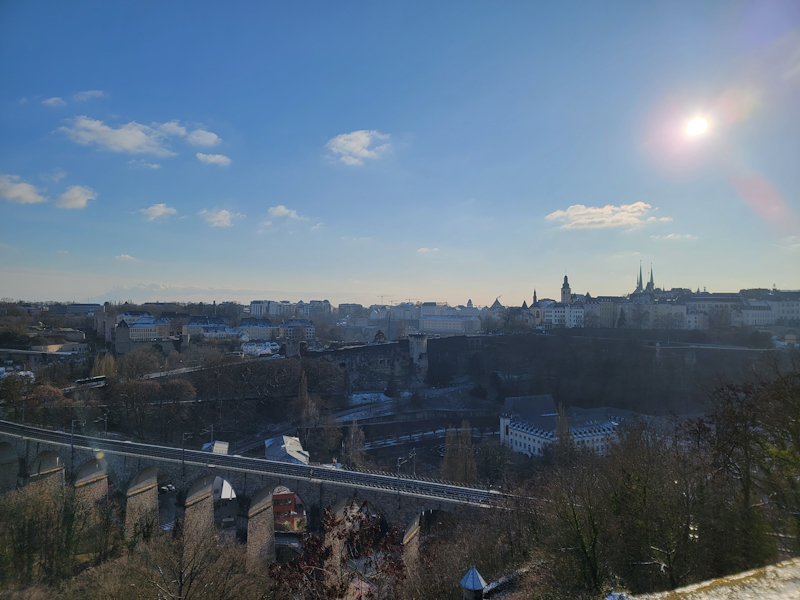The Samsung Galaxy S21 Ultra & S21 Review: The Near Perfect and The Different
by Andrei Frumusanu on February 22, 2021 12:00 PM EST- Posted in
- Smartphones
- Samsung
- Mobile
- Galaxy S21
- Galaxy S21 Ultra
Camera - Zoom Far Beyond
The new Galaxy S21 series have again very different camera setups between the regular variants, and the new Ultra variants. On the normal S21, we’re seeing the same camera configuration as on the last generation S20 series, a 12MP 1.8µm pixel f/1.8 main camera, a secondary wide-angle lens with 64MP 0.8µm pixels and f/2.0 optics that also allows you for high quality digital zooming, and finally a 12MP 1.4µm pixel f/2.2 ultra-wide-angle lens that’s also found in the Ultra models.
The Ultra models this year has changed more significantly. The 108MP main sensor with 0.8µm pixels that bin down to 2.4µm equivalent pixels in 12MP mode on paper looks the same as its predecessor, but is actually a new model that is advertised to feature new dual-conversion gain as well as varying conversion gain capability within one frame readout for better HDR captures. The optics are still f/1.8 with OIS here.
In terms of zoom lenses, we’ve seen much differentiation compared to last year. The 4x optical module from the S20 Ultra has been replaced by a 10x optical module, however the sensor resolution has been reduced from 48MP down to 10MP. The aperture is a very dark f/4.9, and of course has OIS which is needed at these focal lengths.
To narrow the gap in focal length between the 24mm equivalent main camera and the 240mm equivalent periscope telephoto module, we see the introduction of a fourth new camera module with 3x optical magnification (72mm equivalent), with a 10MP sensor and f/2.4 aperture. This is a traditional optics stack module.
For today’s comparison, I included both new Snapdragon and Exynos S21 Ultras to investigate any possible differences in processing between the two models, as well as a slew of other competing phones, including the new Mi 11 which we’ll review soon. Due to the extreme focal length of the new S21 Ultra telephotos I added in reference shots using a 50-230mm alongside the usual 18-55 shots on my Fujifilm X-T30; the shots here should serve as reference for colour reproduction and possible dynamic range of a proper camera, alongside the smartphone shots.
We’ll first focus on the telephoto photos in this page, looking at the main and wide-angle more closely in the next page’s results.

[ S21U(S) ] [ S21U(E) ]
[ S21(E) ] [ S20+(E) ]
[ Note20U(S) ] [ iPhone 12 Pro ]
[ Mate40 Pro ] [ Mi 11 ]
[ Mi 10 Pro ] [ Pixel 5 ]
[ X-T30 ( )( ) ]
Starting with the first shot, what’s immediately noticeable at the longer focal lengths is that there’s only very few phones which are able to do better than the S21 Ultra. Having a 10x optical telephoto at 240mm is well beyond other contemporary phones, and in this regard, it does seem to pay off for Samsung to invest in this massive camera module in terms of internal space.
The Snapdragon and Exynos shots are a bit different here, and I do prefer the brighter and more accurate exposure of the Exynos, although the picture is grainier.
At the 3x telephoto level, the S21 Ultra’s new module pays off in terms of bridging the quality gap, however for some reason I’m not too blown away here, particularly if you compare it to the 3x digital zoom of the Galaxy S21 and S20’s 64MP secondary module.
What’s really disappointing for me is to see Samsung’s 2x level is still horrible – it’s simply just a digital zoom of the 1x 12MP main camera capture, whereas other hi-res main camera module vendors such as Huawei or Xiaomi are using crops out of the 52/108MP modes which much superior quality.

[ S21U(S) ] [ S21U(E) ]
[ S21(E) ] [ S20+(E) ]
[ Note20U(S) ] [ iPhone 12 Pro ]
[ Mate40 Pro ] [ Mi 11 ]
[ Mi 10 Pro ] [ Pixel 5 ]
[ X-T30 ( )( ) ]
Continuing on with a zoom of the clock face here, the S21 Ultra remains pretty much unrivalled in terms of sheer resolving power and detail.
There are still quite obvious differences in processing between the Snapdragon and Exynos, and I prefer the latter’s more natural retention of detail as I feel the Snapdragon at these zoom levels feels like overly too artificial in detail.
The 3x results are also much in favour of the Exynos, though this highly depends on the areas we’re looking as it seems Samsung is employing extensive image stacking depending on the area of the image, with some sections being notably sharper or blurrier than others. It’s still very weird that even at what’s supposed to be the sensor’s native resolution, it generally doesn’t seem that it’s actually native in the result, with the S21’s 64MP module not being that far behind.

[ S21U(S) ] [ S21U(E) ]
[ S21(E) ] [ S20+(E) ]
[ Note20U(S) ] [ iPhone 12 Pro ]
[ Mate40 Pro ] [ Mi 11 ]
[ Mi 10 Pro ] [ Pixel 5 ]
[ X-T30 ( )( ) ]
In this scene, beyond again showcasing the far reach of the S21 Ultra, we’re again seeing very different processing between the two chipset variants, with this time around the Snapdragon unit showcasing a more natural look with more details.

[ S21U(S) ] [ S21U(E) ]
[ S21(E) ] [ S20+(E) ]
[ Note20U(S) ] [ iPhone 12 Pro ]
[ Mate40 Pro ] [ Mi 11 ]
[ Mi 10 Pro ] [ Pixel 5 ]
[ X-T30 ( )( ) ]
Samsung’s segmented multi-frame processing is also extremely visible here – the Exynos has better details in the highlights, although very noisy, and blurry shadows, but the Snapdragon has better shadows, albeit blurry highlights.

[ S21U(S) ] [ S21U(E) ]
[ S21(E) ] [ S20+(E) ]
[ Note20U(S) ] [ iPhone 12 Pro ]
[ Mate40 Pro ] [ Mi 11 ]
[ Mi 10 Pro ] [ Pixel 5 ]
[ X-T30 ( )( ) ]
In a more demanding high dynamic range shot as here, the S21 Ultras didn’t do well when zooming out to the horizon, both underexposing too much with far too fast shutter speeds.
This was a generally tough scenario for all the phones involved so they really didn’t do well at all in terms of exposures and dynamic range.
Overall Telephoto Experience
In terms of far-reaching focal lengths, the new Galaxy S21 Ultra is pretty much unrivalled in the market right now. We’ve seen attempts from other vendors in deploying such optical designs at this magnification, but those were usually combined with tiny sensors, or bad optical performances. The S21 Ultra’s strength is in the optical design of the new periscope module – although it’s only f/4.9, and that can show in some scenarios, it has extremely good optical characteristics in terms of sharpness and general lack of haze, which was previously a problem in the first generation of these kind of modules.
Samsung’s problem I think still lies more in the intermediary zoom levels. 2x zoom is still abhorrent in the way that it’s just a digital magnification of the 1x main sensor output at 12MP, and we yet again see the regular S21 outperform the Ultra at this focal length frame, which is kind of embarrassing.
The 3x telephoto module helps bridge the gap, but it’s still a very large gap to the switch to 10x and the dedicated module. It’s best to avoid anything beyond 5x and 10x as it just looks bad. Samsung here is employing sensor fusion between the 3x and 10x module in small segmented patches, and much like the sensor fusion on the S20 Ultra, it still looks terrible in this implementation as it’s just inconsistent.
I wish Samsung would finally have a more solid solution for these intermediate levels of magnification, the regular Galaxy S21 just offers a significantly better quality and more streamlined experience in this regard, much like the S20 outperformed the S20 Ultra last year. The company should take notes from Huawei and how they use their high-resolution sensor in different binning modes to solve this.










122 Comments
View All Comments
Andrei Frumusanu - Monday, February 22, 2021 - link
It's not, the software rendering part is extremely minor and has never had any significant impact on battery life.snowdrop - Monday, February 22, 2021 - link
So s21/s21+ > s21u for camera experience and s888 > e2100 for image quality. This strongly implies that the s21/s21+ with s888 would offer the best overall camera implementation of all the variants, but unfortunately this combination isn't featured in the article.Any hope of adding some shots from a s21/s21+ with s888 to the comparison?
Andrei Frumusanu - Monday, February 22, 2021 - link
The SD888 isn't definitive in having the better image quality.And no, I'm in Europe so getting Snapdragon Galaxies is hard, I have no plans to further attempt anything beyond the S21U.
snowdrop - Tuesday, February 23, 2021 - link
To me the s888 ultra shots all looked notably better (sharper, better shadow / mid / highlight detail, improved lens correction) with the occasional exception of better highlight detail when the e2100 chose a darker exposure and the one shot where the s21u s888 wasn't in focus. The grass / foliage processing on the e2100 is particularly terrible so it could just be that the scenes you chose exaggerated the e2100's weak spots.It looks like samsung used the stock qualcomm image processing stack for s888 models and is testing beta internal software on the e2100 ones.
I enjoy your excellent commentary on the computational photography capabilities of phone camera systems in your phone reviews. Have you considered including supplementary commentary from someone who has done dslr / lens reviews though to add a more photographer centric perspective though?
s.yu - Wednesday, February 24, 2021 - link
Uh pretty much from the first sample the Exynos was doing better, far better texture, though the SD caught up in a few subsequent samples, so this generation I say the processing is too close to call. Generally the SD variants had a better track record though.JoeDuarte - Monday, February 22, 2021 - link
Can anyone confirm whether the S21 with the Snapdragon has dual frequency GPS? Sorry if I missed it in the article. Dual frequency GPS is supposed to yield a huge accuracy boost, and maybe time to positioning too.JoeDuarte - Monday, February 22, 2021 - link
All the benchmark graphs are missing the S21, but Andrei is talking as though they include the S21. The graphs only show variations of the S21 Ultra, not the regular S21. Can we get the S21 results included?JoeDuarte - Monday, February 22, 2021 - link
Does Arm plan to succeed the A55 low power cores with a credible upgrade? Experts here have talked about this before, how the A55 is hopelessly outclassed by several generations of Apple low power counterparts at this point. Why have they iterated the A7x cores but not the A5x?Does anyone have insight into why Samsung's SoCs are so bad? It doesn't make sense for a company that owns the fabs, gets to develop the process nodes, and design the SoCs to be so far behind, spanning maybe a decade now. Is there no advantage, no synergies or co-optimization opportunities, in such complete vertical integration? It's supposed to be an advantage for Apple to design its own SoCs and cores. Why is it not an advantage for Samsung to do that and to*also* have the fabs and node development? Is there a talent issue? I wonder if maybe there just aren't enough engineers operating at the necessary level of skill to populate all these companies. The actual human cognitive science of how these teams do what they do is a black box, and apparently TSMC and Apple are able to do things that Samsung, Intel, and GF are not, and the difference is surprising.
nandnandnand - Thursday, February 25, 2021 - link
I think the Cortex-R82 points to further improvements to the efficiency cores being possible. Or Apple's own take on efficiency cores.Maybe we'll find out about an A55 successor within the next few months, before TSMC 3nm kicks off.
nandnandnand - Thursday, February 25, 2021 - link
Also, I think the "Helios" Neoverse E1 is better than A55, even discounting its SMT capability.